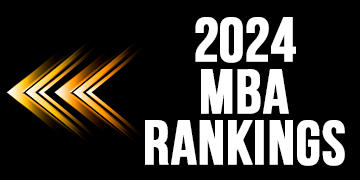Best and Worst Ways to Sign an Email: Professional Communication Tips from UMD-Smith Experts
You’ve crafted a professional email that, you hope, firmly positions you and your employer in a favorable light. It’s concise and articulate, maybe even a bit persuasive. Don’t blow it in those final, parting words, ending with a signoff that’s also a turnoff.
Why does it matter? Sound email practices are sound business practices. Consider the average office worker sends about 40 work emails a day and receives 121.
Experts from the University of Maryland’s Robert H. Smith School of Business expose the best and worst ways to close a professional email:
Warmly (or warm regards): Avoid them both. “I can think of people who have signed their emails this way who aren’t particularly warm people and the content of whose emails could not be regarded with favor,” says Rachel Loock, career and leadership coach with the Smith School’s Executive MBA program.
Respectfully: Doubtfully, says Loock. This signoff, while perhaps acceptable in mailed correspondence, comes across as phony or artificially intimate in email.
Thanks in advance: No, thank you (in advance.) Chances are, you’ve just asked the email recipient to perform some task for you. You should not now assume they are going to abide by your request by thanking them before they have agreed to help. Instead try: “Thank you for considering my request,” or, “Thank you for letting me know if this is doable.” Or just a simple and effective, “Thank you.”
Ciao: No, per favore. Unless you’re actually Italian or are sending your email from Italy, or both, don’t do this. It’s pretentious.
Cheers: Acceptable as a signoff only if you are 1. British, 2. Australian, or 3. Offering to buy the recipient a cold beverage later.
Just your name: Sometimes it’s best not to overthink absolutely everything. When in doubt, simply sign your name and include your signature block.
Sincerely: For decades this was the go-to closing for handwritten and typed correspondence. In the email era, it’s (sincerely) old fashioned and (sincerely) a little stiff.
Best (or its variations, ‘Best wishes,’ ‘Best regards’): These are often your best bets, but avoid the overly saccharine, overly familiar “My best.”
Rgds or Chrs: Really? Are you so busy that you couldn’t just type out the rest of the letters?
Thank you (or variations ‘Thanks,’ ‘Thank you again,’ ‘Many thanks,’ ‘Much thanks’): Yes, please. This should almost always be your signoff. People like to be thanked, and you’re a professional who doesn’t take people for granted. Thanks for that.
Emoticons or emojis: A winky face can send the wrong impression or can simply distract from your message when you don’t know the recipient well. However, emojis and emoticons can succeed when you already have a well-established bond with the email recipient. “Emojis can help communicate emotional content, but only if the recipient doesn’t open your email and think, ‘What the hell, an emoji?!'” says Trevor Foulk, assistant professor of management and organization at the Smith School.
Anything ending in !: Just no, says Loock. Calm down and close the email like a pro. No exclamation points, ever.
Visit Smith Brain Trust for related content at http://www.rhsmith.umd.edu/faculty-research/smithbraintrust and follow on Twitter @SmithBrainTrust.







